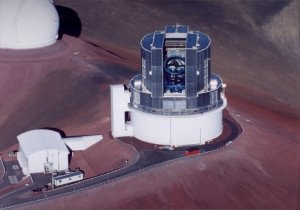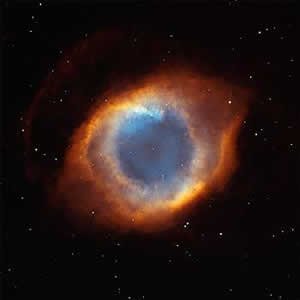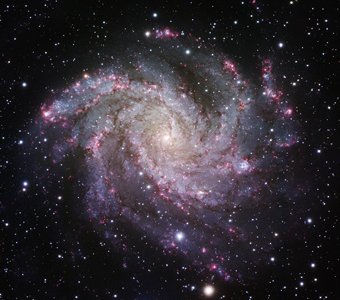Subaru Telescope
The Subaru telescope is on Mauna Kea in Hawaii. It is run by the National Astronomical Observatory of Japan (NAOJ). From 1999 until 2005, it had the largest primary mirror in the world. Even today, its 8.2-metre main mirror is still one of the largest in the world.

Credit: NAOJ
Subaru can observe visible and infrared wavelengths. The light collected by the mirror is focused onto one of its many science instruments. The astronomer can choose which tool to use depending on what they want to learn. This means it is good at studying lots of topics including:
- Finding asteroids in our Solar System
- Measuring the temperature of ice in a comet
- Studying how stars and planets form
- Observing distant galaxies in detail
- Learning about dark matter and dark energy
The stiller the air, the clearer the image. The Subaru's enclosure has been designed to reduce any motion in the air which passes over the top. It is a cylindrical shape and turns with the telescope as it moves. It also has special vents which open at night to let air through. Subaru also uses adaptive optics to correct for blurring caused by movements in the air.
As a large telescope turns to point at various objects, gravity acting on the mirror can pull it out of shape. This is because the mirror often weighs many tonnes! If the mirror is not the ideal shape, the image will not be as good. The Subaru has a thin and flexible primary mirror, only 20 cm thick. There are 261 computer-controlled devices on the underside of the mirror. These can push and pull parts of the mirror into the correct shape. This method is called active optics.

Credit: NAOJ

Credit: NAOJ

